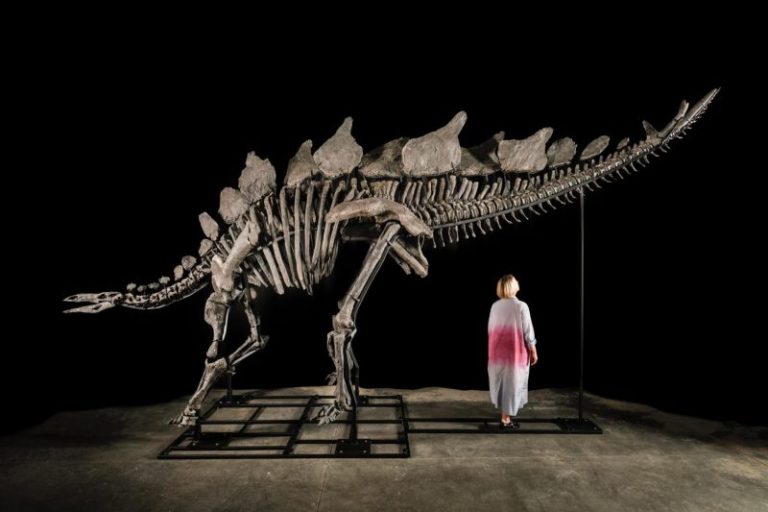In a recent auction that made headlines worldwide, billionaire hedge fund manager Ken Griffin purchased a rare stegosaurus skeleton for a staggering $45 million. The acquisition of this prehistoric specimen marks a significant moment in the intersection of paleontology, art, and high finance.
Ken Griffin, the founder and CEO of Citadel, is no stranger to eccentric purchases, having a penchant for fine art and luxury real estate. The acquisition of the stegosaurus skeleton further cements Griffin’s reputation as a collector with a taste for the extraordinary. While $45 million may seem like a hefty price tag for a dinosaur fossil, it is not unprecedented in the world of high-end collectors. The wealthy elite have been known to spend exorbitant amounts on rare artifacts, creating a competitive market for unique and historical items.
The stegosaurus, a herbivorous dinosaur with distinctive plates along its back, roamed the Earth during the Late Jurassic period, around 150 million years ago. Its skeleton, meticulously excavated and reconstructed, provides valuable insights into the ancient history of our planet. Museums and private collectors alike covet such specimens for their scientific and aesthetic value.
Beyond its scientific significance, the stegosaurus skeleton represents a fusion of art and natural history. The meticulous craftsmanship required to excavate, prepare, and mount such a specimen elevates it to the realm of art. The intricate details of the skeleton, from its delicate bones to the iconic plates, showcase the beauty of natural forms that have captivated humans for centuries.
Griffin’s acquisition of the stegosaurus skeleton also raises questions about the ethics and legality of buying and selling paleontological specimens. Fossils are non-renewable resources that provide crucial information about our planet’s history and evolution. Many argue that such artifacts should be preserved for scientific research and public education, rather than being traded as luxury commodities. The commercialization of fossils can lead to looting, illegal excavations, and the loss of valuable scientific data.
As awareness grows about the need to protect paleontological resources, the debate over the ownership and sale of dinosaur fossils will likely intensify. Museums, scientists, governments, and collectors must find a balance between preserving these irreplaceable artifacts for research and education and allowing private individuals to appreciate and enjoy them.
In conclusion, Ken Griffin’s purchase of a stegosaurus skeleton for $45 million showcases the intersection of wealth, art, and natural history. While the high price tag may raise eyebrows, it highlights the unique allure of rare artifacts from the ancient past. As the debate over the commercialization of fossils continues, it is essential to find a balance that respects the scientific value and cultural significance of these treasures.



